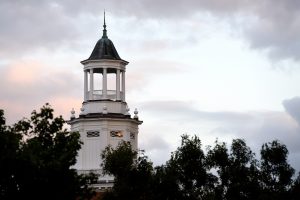
Sean Sun, professor in the Department of Mechanical Engineering at Johns Hopkins University, and Dan Popescu, a PhD student in the Department of Applied Math and Statistics, recently published an article in the digital magazine Aeon.
In the article, titled “What would it take to build a tower as high as outer space?” the pair argues that a key concept needed for building megastructures – those of 1,000 km or more in dimension – can be borrowed from biology. One example is the much-discussed space elevator, a free-standing tower that could more efficiently transport people and cargo up beyond the Earth’s atmosphere without having to use rockets.
Currently, the main challenge to building megastructures like the space elevator is finding materials with sufficient tensile strength. Most materials simply can’t handle such a heavy load. However, if engineers draw inspiration from natural biological structures, such as bones, tendons and ligaments, which can sustain tremendous stress and self-repair, they may be able to design and build a reliable space elevator with available materials.
With the right bio-inspired approach, the space elevator can move out of science fiction and into reality, according to Sun and Popescu.
“Megastructures are no longer science fiction. Never dissuaded by the collapse of the Tower of Babel, as recounted in the Old Testament, humans have continued to build bigger and higher and faster, fueled by tremendous advances in science and technology. Yet according to the standards of classical reliability engineering, we are still far away,” the pair writes. “Instead we need a new paradigm, one that focuses not only on material strength, but on systems’ inherent reconstructive capacities. We ought to look no further than the bounty of biological life around us and trust there is much to learn from the sweep of evolutionary history.”
The article draws in part on research from an upcoming paper by Sun and Popescu, currently under review at an academic journal, titled “Building the Space Elevator: Lessons from Biological Design.”
Read the entire Aeon article here.